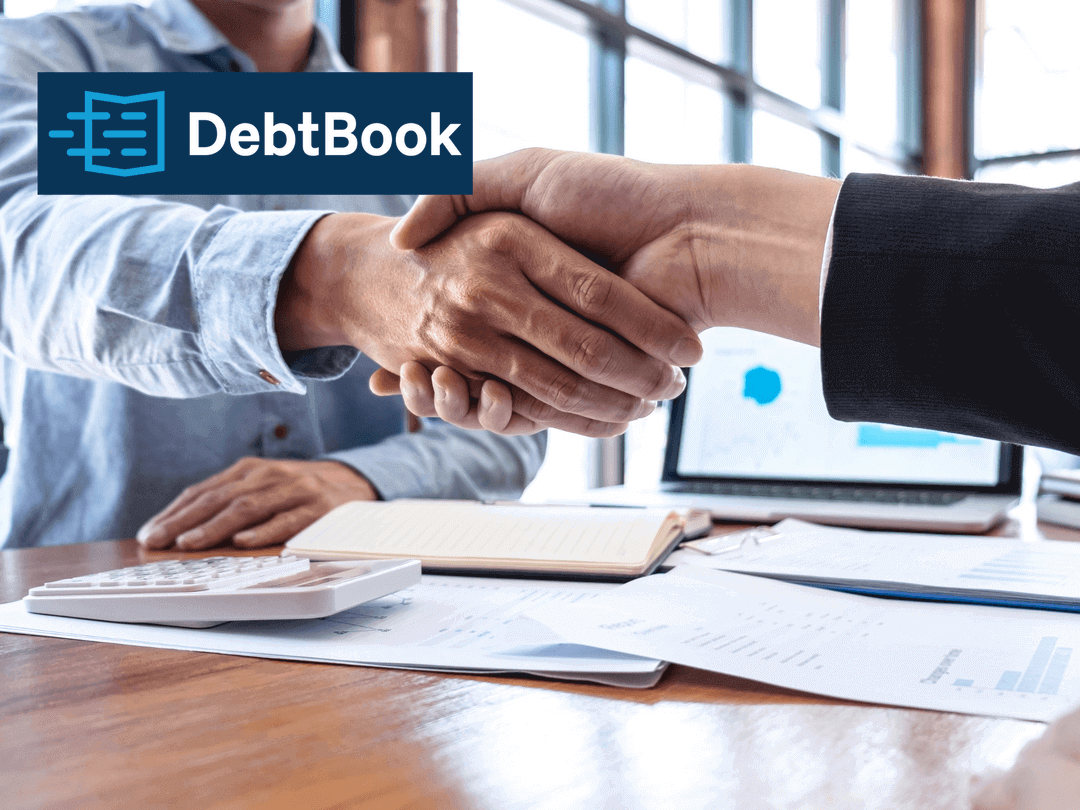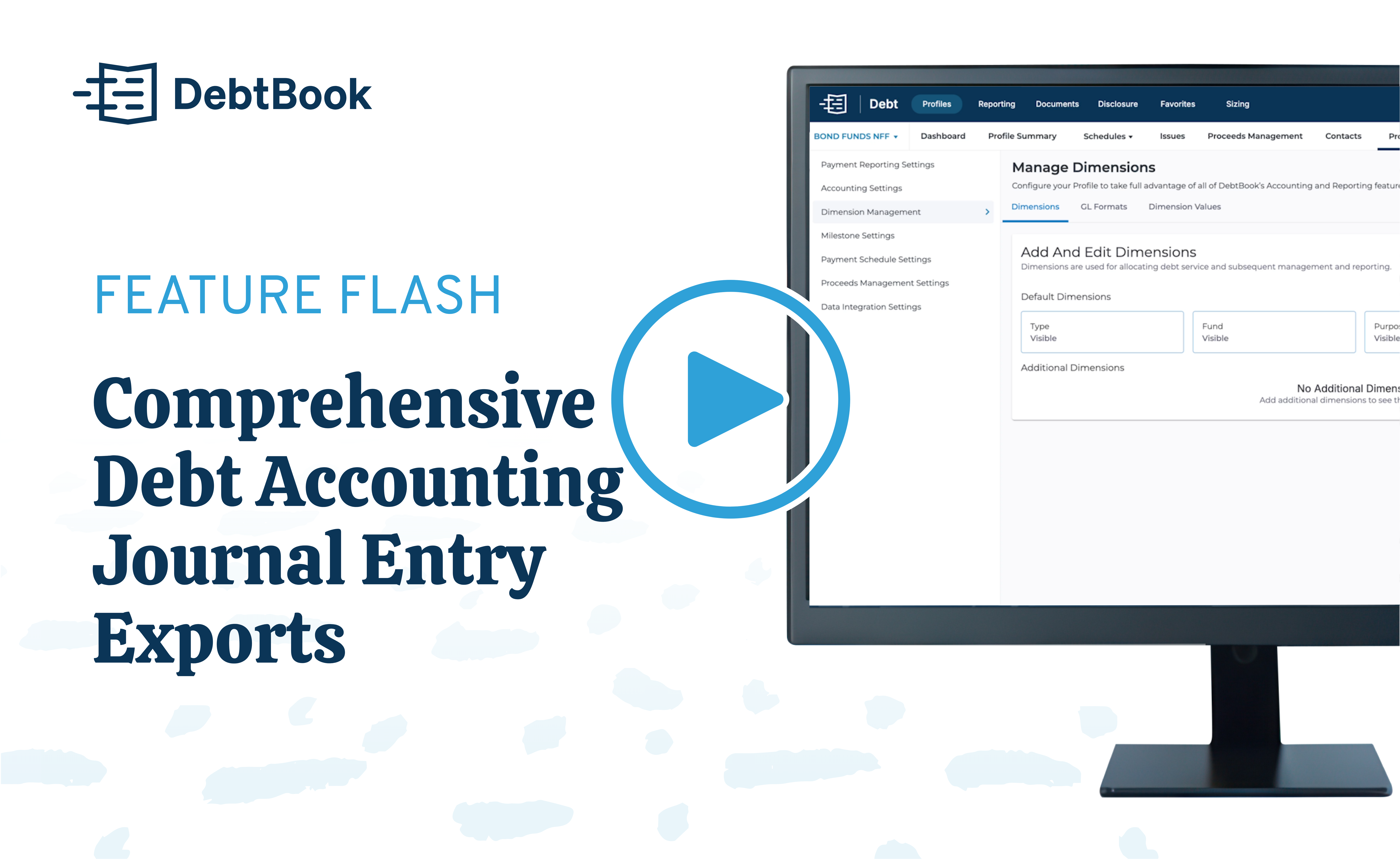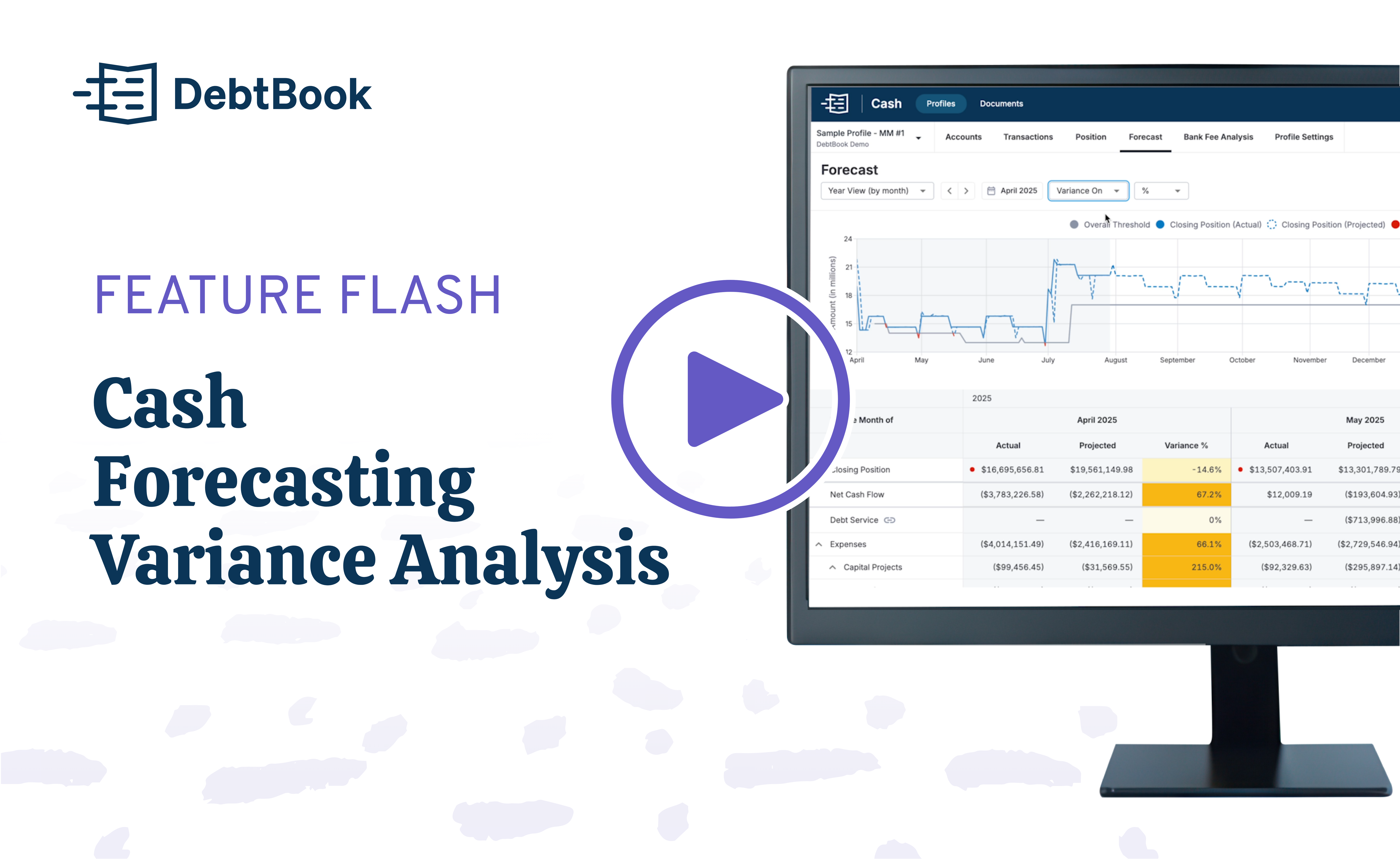Organizations are seeking out software now more than ever before. As finance departments are consistently asked to do more with less, they are recognizing the need for solutions that can address some of the key issues they face such as manual and time-consuming processes and limited collaboration and transparency.
Debt and lease management software is currently sweeping the public entities market, including local and state governments, higher education institutions, and public healthcare facilities. And for good reason -- the ever increasing changes in regulations from the Governmental Accounting Standards Board (“GASB”) has kept these organizations on their toes and requires them to change certain business and reporting practices. Debt and lease management software, designed specifically for finance departments, can provide a huge lift with regards to implementing and complying with the very specific requirements of these new regulations, such as GASB-87.
Debt management software primarily serves the function of “empowering all of those who touch some aspect of an organization’s debt portfolio to perform their specific function with significantly greater ease and confidence, allowing them to save time, reduce errors, and make smart, informed decisions.” Lease management software can be defined as “technology that helps finance teams collect and track their lease obligations, organize and extract data from their lease documentation, generate schedules, manage and record lease payments, and share information with internal and external team members.”
Finance teams from organizations of all sizes can benefit from this type of technology platform, but selecting the right solution and getting buy-in from key stakeholders can feel like a daunting task. Read on to learn how to build a business case for debt and lease management software.
What is a business case?
Imagine: you recognized pain points in your processes, you did your research, and you identified a potential tech solution. But now you need to get your colleagues onboard, and the excitement you feel after learning how much new software may impact your day-to-day can sometimes be difficult to convey. You understand the value it will bring to your organization and want to get things moving, but where do you go from here?
Whether you’re looking to purchase your team’s first debt and lease management software or want to upgrade your current system, a business case can help to justify the investment to decision-makers.
Who is involved in the business case?
There are a few key players to consider when developing and proposing a business case. Each is responsible for a different set of tasks. To begin, identify which people in your organization will play a role in creating or approving your business case.
Primary Advocate(s)
Business cases typically start with the end-user(s) of the software doing the bulk of the research, planning, and sales demonstrations to determine the right solution for them. This is the person(s) who will often write the business case. From Debt Managers to Finance Directors, anyone who feels the pain of the problem, believes in the solution, and will champion it can serve as the primary advocate.
Stakeholders
Getting buy-in from stakeholders can be key to success. So, who are your stakeholders? Anyone who is involved in or impacted by your debt and lease management processes. Their endorsement of your business case will make it even stronger. Be sure to collaborate with these people and specifically communicate the value of the software, such as improved collaboration, increased transparency, and automation of historically manual processes.
Decision Makers
This is the person or group of people that holds the checkbook and the fate of your proposal in their hands. The role of the decision maker varies from one organization to another. Typically, the decision maker is concerned about the proposed solution’s benefits, value, and cost. Their primary focus will be to understand whether the solution will help the organization better achieve its goals.
What are the benefits of a business case?
Business cases may add an extra step in the purchasing process, but they have several advantages. The most obvious benefit of writing a business case is that you can gain a deep understanding of what solutions are in the marketplace and feel confident that you made an informed purchase decision. You'll learn about additional benefits and values that debt and lease management software provides that you may not have originally considered. Second, putting in the time and effort to develop a business case increases the likelihood of successfully implementing and using the software. Lastly, getting buy-in from key decision makers is an essential part of implementing any technology platform. Without their buy-in, there is a greater chance that the purchase decision will have roadblocks or fall through altogether and you will be left with your current resources and ways of managing your debt and leases.
What are the steps to develop a business case?
1. State the challenge
Straight away, you need to highlight how debt and lease software can address the challenges you’re facing and/or the goals you’re trying to achieve.
Challenges you may be facing with your debt and leases include:
- Waiting until the last minute or missing ‘coming due’ debt repayments
- Errors in your excel spreadsheets that create audit nightmares
- Spending weeks or months preparing year-end notes for all obligations
- Data errors causing inaccurate forecasts for future payments and financial planning
- Decentralized purchasing departments with no standard for lease organization and management
- Feeling overwhelmed, understaffed, and underprepared to comply with GASB-87
Next, you should address why it’s necessary to take action now to address these issues and instill a sense of urgency in decision-makers. For example, if your key decision maker’s primary concern is staying compliant, explain how waiting until the last minute to prepare and reorganize their leases to fit GASB-87 will cost the organization if they choose not to fund the project sooner rather than later.
2. Provide a solution
Now that you have their attention, present your team with a plan for how you’ll use the software to address the problem(s) the department is experiencing. Be sure to highlight how the debt and lease software addresses specific pain points, not just how it supports your current processes.
You may want to list specific features the software can provide such as:
- Ability to track and manipulate debt obligations across multiple categories, filters, and allocations (e.g. type of debt, source of repayment, project financed, etc.) with the ability to send automated payment reminders to your email
- Dashboards, reporting, and automated journal entries and year-end audit note disclosures
- Ability to invite external parties (such as your auditors and lawyers) to view reports with read-only access
- GASB-87 compliant lease structures
- Consolidated hub for all debt obligations and leases
The key here is to demonstrate why an investment in debt and lease management software is necessary, rather than continuing with your current practices of using spreadsheets, disparate documents, or even paper binders in some cases.
If the software solution you’re considering has case studies or current clients you can reference, it may be beneficial to recap their stories in your proposal and how they parallel your challenges.
3. Outline costs for an investment in debt and lease management software
Next up, you need to break down the costs associated with the software:
- Tangible costs, such as the expected annual cost of investment and any up-front fees such as implementation, client support, or consultation costs
- Intangible costs, such as the time required to implement and learn a new system
Most vendors will be able to provide you with a quote or estimate for the tangible costs of purchasing their software solution. Be sure to ask for all upfront costs including any fees associated with implementation, if support is included, and if there are consultants available to advise you and provide recommendations on getting your organization up and running.
4. Outline the benefits
Once the cost has been covered, it’s time to highlight the expected benefits associated with debt and lease software:
- Tangible gains, such as time and money saved
- Intangible gains, such as breaking down silos, facilitating collaboration, and improving data integrity and decision-making. These benefits are harder to quantify, but are a critical aspect of the return on your investment (ROI).
You will want to relate the benefits of the software back to the specific challenges you outlined in step one.
Benefits of using debt and lease software include:
- Centralizing and streamlining internal processes
- Improving accuracy and confidence in the data
- Collaborating more easily and effectively
- Generating actionable reports and insights
- Facilitating the implementation of and compliance with current and future GASB requirements
5. Provide a timeline
Next you need to present a timeline to stakeholders to ensure you’re both on the same page with regards to how long the process of evaluating and implementing debt and lease software will take. As you are in discussions with software providers, ask how long the average organization takes to implement the software. Consider potential roadblocks to software implementation that could impact your timeline, such as scattered or disorganized leases.
6. Leverage change management
This last step is critical for securing buy-in for your proposal. After all, it’s easier to stick with the status quo and do nothing than to make a change.
Confront potential fears head-on:
- Remind your team of the danger and costs of inaction (which you outlined in step 1)
- Acknowledge the change management pitfalls that organizations commonly fall prey to, and then state the best practices you plan to follow to avoid making the same mistakes
- Build trust in the software solution with case studies, success stories, and insights from the platform’s leadership team
Further, ask your software vendor if there are any resources, best practices, or timelines available that you can share with your team to help secure buy-in.
Disclaimer: DebtBook does not provide professional services or advice. DebtBook has prepared these materials for general informational and educational purposes, which means we have not tailored the information to your specific circumstances. Please consult your professional advisors before taking action based on any information in these materials. Any use of this information is solely at your own risk.











